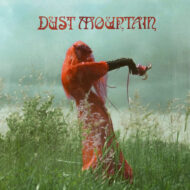 In the northern hemisphere, autumn is the time of the year when nature is at its most colourful, its most friendly. It’s neither extremely hot nor extremely cold, and there are field crops and fruit aplenty. Earth looks like a place of abundance, a place generally supportive of life. Farming cultures have a long tradition of celebrating the seasonal plenty. Although the focus has shifted, it’s a tradition that is still kept alive even when the majority of the people don’t work in agriculture anymore and have no clue where their food is coming from. But like most of our high days and holidays autumnal thanksgiving celebrations have pagan roots. Basically, they are an expression of nature worship and have only been incorporated into modern religion.
In the northern hemisphere, autumn is the time of the year when nature is at its most colourful, its most friendly. It’s neither extremely hot nor extremely cold, and there are field crops and fruit aplenty. Earth looks like a place of abundance, a place generally supportive of life. Farming cultures have a long tradition of celebrating the seasonal plenty. Although the focus has shifted, it’s a tradition that is still kept alive even when the majority of the people don’t work in agriculture anymore and have no clue where their food is coming from. But like most of our high days and holidays autumnal thanksgiving celebrations have pagan roots. Basically, they are an expression of nature worship and have only been incorporated into modern religion.
The celebration of the richness and abundance of autumn, its pagan roots included, is the starting point for Dust Mountain’s debut album Hymns for Wilderness. On the album’s opening track Harvest Maiden, you can hear all the splendour of autumn, the mildness of the weather, the warmth of the colours and the ease that comes with the plenty. Folk is mixed with psychedelia, resulting in a sound reminiscent of the 1960s and 70s. Soft female vocals of an elfin character, slowly gaining in intensity, have a bewitching effect hinting at things to come.
Dust Mountain are a band from Finland made up from members of several well-known outfits. Founded in 2016 by siblings Toni Hietamäki (Oranssi Pazuzu, Waste of Space Orchestra) and Henna Hietamäki (Cats of Transnistria, Henna & Houreet), they now include Jukka Rämänen (Hexvessel, Dark Buddha Rising) on drums, Riku Pirttiniemi (Death Hawks) on bass, and guitarist/backing vocalist Pauliina Lindell (Vuono). The band took their time to put their debut album together, but in April 2021 they finally had their international live debut at Roadburn Redux.
Under My Spell, track number two of seven, continues similar to Harvest Maiden, but with an added dash of magic and a touch of the occult. Oriental tunes introduce a foreign, different element and help to create a mystical atmosphere. Maragaret confirms that impression and the mood gains in intensity, the vocals change from bewitching to ritualistic, with the lyrics speaking of a “dance with the devil”. The tempo increases noticeably on Village On Fire, the music becoming more rhythmic. Everything culminates in the beginning of Holy Equinox where a reverberating bass creates the darkest soundscape so far, but only to establish a background for higher notes which symbolize the light breaking through. The following Apollo has the most occult atmosphere of all of the album’s tracks reminding me of bands that play dark psychedelic rock, like, for example, Wolvennest, but the final song Bird Hymns returns to the initial vintage-psyche-rock sound template and ends the album on a happier, lighter, up-lifting note.
In summary: Hymns for Wilderness by Dust Mountain features music with a bit of patina and a dreamy, enchanted atmosphere. The overall attitude is rather positive and optimistic, despite the presence of dark clouds and threats. The album’s positivity is of a quiet, confident and unintrusive kind, without any hysteria. There is a sweetness to be felt, but one that doesn’t deny darkness and that isn’t afraid of it. An ideal companion for a stroll – imagined or real – through autumnal fields and forests, Hymns for Wilderness recalls pagan pasts and hints at existing hidden worlds.
(7.5/10 Slavica)
https://www.facebook.com/DustMountainFIN
https://dustmountainn.bandcamp.com/album/hymns-for-wilderness

Leave a Reply